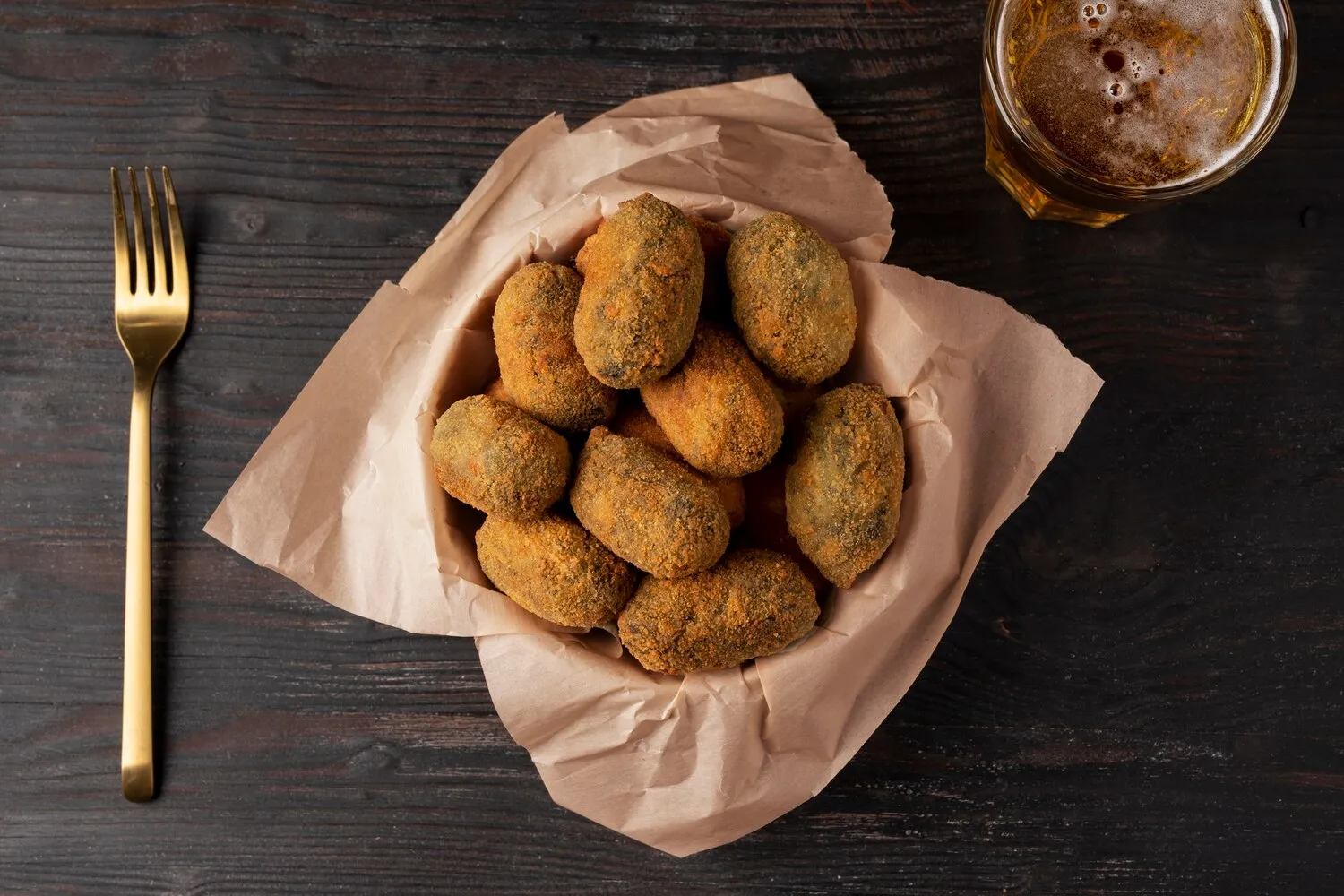
Croquetas
Homemade croquettes, a popular Spanish tapa.
Nutrition Facts
* The % Daily Value (DV) tells you how much a nutrient in a serving of food contributes to a daily diet. 2,000 calories a day is used for general nutrition advice.
Kalaka Vinos Y Tapas
Croquetas, while deeply associated with Spanish cuisine, have roots in French gastronomy. It's believed the concept of croquettes, small fried balls of creamy filling, originated in France and later made its way to Spain, where it was adapted and popularized using local ingredients and techniques.
Croquetas are a cornerstone of Spanish tapa culture, enjoyed socially and representing home-style comfort food.
Tapas Culture
Croquetas are almost universally found in tapas bars across Spain. They are typically served as part of a selection of small dishes to be shared amongst friends and family, often accompanied by drinks like beer or wine.
Family Recipe
Homemade croquetas are a source of pride and often reflect a family's specific recipe, passed down through generations. Variations in ingredients and techniques are common, making each batch unique.
Comfort Food
Croquetas evoke feelings of nostalgia and comfort, similar to mac and cheese in some cultures. They are often associated with home-cooked meals and childhood memories.
Croquetas offer a harmonious blend of creamy, savory, and often subtly smoky flavors, balanced by a crisp, golden-brown exterior.
The dominant flavor depends on the filling. Jamón (ham) croquetas deliver a salty, savory richness. Bacalao (cod) croquetas have a distinctive fishy, yet comforting taste. Chicken croquetas are mild and comforting. The béchamel sauce base provides a creamy, milky backbone, while the breadcrumb coating contributes a satisfying crunch and a touch of oiliness from frying. Nutmeg is frequently used, adding a warm, subtle spice.
Consistency of Béchamel
The béchamel sauce must be thick enough to hold its shape when cooled. A too-thin sauce will result in croquetas that are difficult to form and prone to bursting during frying. Cook it slowly and stir constantly to avoid lumps.
Cooling Time
Allow the béchamel mixture to cool completely in the refrigerator (ideally overnight) before forming the croquetas. This ensures that they are firm enough to handle without falling apart.
Breadcrumb Coating
Use a good quality breadcrumb and coat the croquetas thoroughly to ensure a crisp and even crust. A double coating can provide extra protection and crunch.
Frying Temperature
Maintain a consistent oil temperature (around 350-375°F or 175-190°C) for optimal frying. Frying at too low a temperature will result in greasy croquetas, while too high a temperature will cause them to burn before the inside is heated through.
Explore additional Tapas dishes and restaurants
Explore TapasDiscover top dining spots and culinary experiences in Huelva.
Explore HuelvaLearn more about the food culture, restaurant scene, and culinary heritage of Spain.
Explore Spain